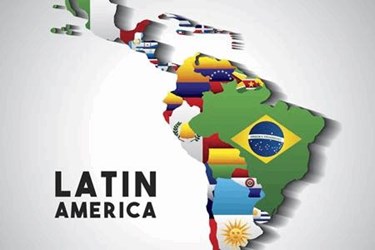Outsourcing Dreams In Latin America

By Louis Garguilo, Chief Editor, Outsourced Pharma

When Boehringer Ingelheim swapped its consumer healthcare assets with Sanofi (for Sanofi’s animal health business), Edgardo Rodriguez went along, too. In some ways, it was like walking to the other side of the street in his beloved Buenos Aires. And his “new” job at Sanofi runs down the same road: Manage a supply chain for a European pharmaceutical company that includes dozens of CDMOs – some local, national and multinational – throughout Latin America.
Outsourcing Dreams
Managing dozens of CMO relationships from a few regional offices is challenging anywhere. Doing it throughout the countries of Latin America adds an additional level of excitement. Rodriguez has been meeting the challenges and feeling the excitement for the last decade and more.
 “I’ve worked in Europe as well as North America,” says Rodriguez, currently Sanofi’s Head of Consumer Manufacturing for Consumer Healthcare in Latin America. “I understand those mindsets, but it’s absolutely different here for global companies.
“I’ve worked in Europe as well as North America,” says Rodriguez, currently Sanofi’s Head of Consumer Manufacturing for Consumer Healthcare in Latin America. “I understand those mindsets, but it’s absolutely different here for global companies.
For one thing, in the U.S. and European markets there aren’t strict borders requiring reams of paperwork for customs challenges. For example, says Rodriguez, you can move product from France to Spain without too many problems. In Latin America, though, “we have what I call the challenge of geography.” So much so that he places the management function in Latin America “at a different level than that of the US or Europe.”
Rodriquez performs at this different level with a lean – but well trained – organization serving the entire region (and areas of Central America and Mexico), and servicing a large portfolio of pharmaceutical products. Asked about the most pressing challenges for his team, he draws us up from the topography and into some philosophic air:
“For me, the biggest challenge comes when you don’t have a clear concept, or clear strategy, for your network,” he says. “Without this ideal of what you are doing, you cannot properly define the model profile of your business partner; without the right business partners, you can’t construct the proper partnership; and when you don’t have the proper partnership with your CMOs in Latin America, everything becomes increasingly complex.”
As for that final step, Rodriquez adds, “And you must dream together to construct the relationship. Share your business dreams. Listen to the aspirations of your partners.”
And listen for noises.
“What are the ‘noises’ that you hear from the partner? For sure, one of the first is related to costs,” Rodriquez says. “So go ahead and work together to construct the costs. Construct win-win deals with the CMO. Both sides must put everything on the table: forecasts, investment, future channel opportunities, business strategies, profitability, orientation to process improvement, quality mindset, and those dreams you have and they have for the relationship and future.”
Partners Of Choice
Because of national (and intra-regional) regulations and laws requiring that pharmaceutical companies produce – or at least maintain labs to release – product for domestic sale; because of large sales potentials in countries like Brazil; because of an educated, experienced workforce; and because of comparatively favorable cost structures, most all global pharmaceutical companies find themselves in Latin America, and looking for the best partners.
But are there enough CMOs and distributors to support this still growing market and cast of pharma characters? Where should a company new to the region start looking for them?
Rodriquez suggests that product-owners attempt to get started by entering discussions with the bigger, established partners. “Companies, by their size alone, indicate they have a quality and compliance culture you can take advantage of.”
Having said that, even Rodriquez, with his long career at large pharma companies, also maintains a coterie of smaller, regional partners. “Let’s say you contract with a well-known company to produce your OTC product,” he explains. “You’ll get excellent compliance, quality standards, and understanding of regulations. On the other side, though, you could run into conflicts with their top customers, or their own programs, for capacity and priority. It is a real concern. The smaller CMOs here will spread the red carpet for you. You may have to invest some time and money to help them develop a top quality culture and other improvements, but in my experience it can prove quite rewarding.”
Rodriquez says as it stands today, his “proper portfolio of CMOs” ranges from “any one of the ten biggest globally integrated service providers with locations in Latin America, to some very minor players in the region.” However, he interjects, picking the smaller partners requires pharma companies have first implemented a rigorous selection process … with a variety of filters.
“Because what are you analyzing?” asks Rodriguez. “You are analyzing different perspectives. I’m not talking about only contracts or financial questions, but watching closely for business practices and working processes, watching the culture, their concept for profitability, and other variables.”
Rodriguez says that any company establishing itself in Latin America should have a strong, on-going ranking system for potential partners. “We continue the analyzing of our partners, for example by utilizing regular business review meetings to estimate progress. I have been able to work long-term with excellent CMOs, mainly located in Brazil, Mexico, Colombia, Chile and Argentina – the big hubs for the majority of the companies. We have smaller companies in those countries as well. The secret is to have a never-ending, open discussion.”
Global, Local, And Careful
Rodriquez sees these “two different momentums” when it comes to growing and utilizing his CMO network. First, after years of his multinational companies having built relationships and networks around the world, the main corporate objective today is to utilize the operations of those global partnerships wherever they exist. “If we are working with a CMO in Europe, and they have operations in Argentina, that’s a CMO and location that could take precedence over others in our region.”
“Nonetheless,” continues Rodriquez, “sometimes you have a new idea for business development or for a product, and you have to do regional research to find local partners for the best solution.” In other words, globalization and localization are both tracks to follow in Latin America.
And follow either path carefully. Because no article on Latin America can end without at least noting some of the political and economic challenges – with by far the worst case today being Venezuela’s complete societal breakdown.
“There are ups and downs in this region and the countries here,” says Rodriguez. “Of course the tension is in Venezuela. It is obviously just too difficult to do business there.
The good news is the region continues to grow and improve based on macro- and micro-economical KPIs for pharmaceutical companies. I feel we are in one of those moments in time where nearly all the other countries are on the right path.”
